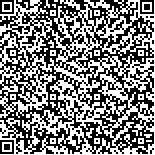下载中心
优秀审稿专家
优秀论文
相关链接
摘要

森林火灾是一种危害极大的自然灾害,是森林扰动的主要类型之一,直接影响森林生态系统结构、碳循环甚至全球气候的变化。近年来,航空平台和传感器的技术进步有效地提升了机载遥感系统探测和监测森林火灾的能力,推动了机载遥感在森林可燃物调查及载量评估、火险测报预测、火场态势及火情监测、灾害损失评估以及火烧迹地生态修复治理等方面的应用。本文首先介绍了中国林业科学研究院机载光学全谱段遥感系统CAF-LiTCHy(Chinese Academy of Forestry’s LiDAR,Thermal,CCD and Hyperspectral airborne observation system),描述了激光雷达扫描仪、热红外相机、CCD相机和高光谱传感器等传感器的参数;然后,阐明了集成方案和观测数据的处理方法;最后,以四川省西昌市“3.30森林火灾”作为该系统火后灾情遥感调查和灾情评估应用示例,综合多传感器数据特征,进行森林火烧程度评价,分析该系统采集的正射影像、冠层高度模型、高光谱影像、热红外影像在森林火灾监测评价中的潜力。研究结果表明CAF-LiTCHy机载遥感观测系统能有效获取森林火灾的灾情信息、火场及火环境参数,可为预防、预报预警、扑救指挥、灾害评估和生态修复提供支持。
Forest fire is one of the major forest disturbances, which directly affects forest ecosystem structure, carbon cycle, even global climate change. In recent years, the technical progresses of aerial platforms and onboard sensors have effectively improved the capability of airborne remote sensing to detect and monitor forest fires. As a result, many forest fire applications have been carried out with airborne data, including the forest fuel assessment, evaluation of forest fire potential and prevention, forest fire monitoring and situation evaluation during firefighting, post-fire damage assessment, ecosystem management and restoration.This paper introduces an integrated airborne remote sensing system, i.e., Chinese Academy of Forestry's LiDAR, Thermal, CCD and Hyperspectral (CAF-LiTCHy) airborne observation system. The CAF-LiTCHy airborne observation system is equipped with Light Detection and Ranging (LiDAR) scanner, thermal infrared camera, CCD camera and hyperspectral scanner and can obtain the corresponding data, simultaneously. The parameters of these sensors and the data processing scheme were described to show the advanced and scientific nature of CAF-LiTCHy airborne observation system. Moreover, the detailed “image - spectral - temperature - height” information of forest benefits the aforementioned applications. Here, the Xichang ‘3.30 Forest Fire’ in Sichuan Province was selected as a case study to test the capability of CAF-LiTCHy airborne observation system in post-fire survey and disaster assessment.The burn severity levels can be interpreted from the high spatial resolution CCD image directly. Meanwhile, the LiDAR-derived Canopy Height Model (CHM) shows the different burn severities of the canopy in spatial and vertical structural level. The vegetation indices calculated from hyperspectral image indicate that the pigment content and water content of canopy decrease simultaneously. The thermal information shows a higher temperature in high burn severity areas than other areas due to lots of charcoals from fire. Finally, with the combination of the CCD, CHM, spectral and thermal temperature information, the distribution of burn severity levels of the study area was mapped. The CAF-LiTCHy airborne observation system can obtain forest fire information and offer fire-related parameters effectively. The design of CAF-LiTCHy airborne observation system is advanced and scientific, and the acquired data are in high resolution, multiple dimensions and good geo-location consistency. The efficiency and stability for airborne data collection provide rapid response for fire events. Furthermore, the CAF-LiTCHy airborne observation system has the potential to provide support for fire prevention, fire risk forecast and early warning, firefighting decision-making, post-fire damage assessment and ecological restoration.

